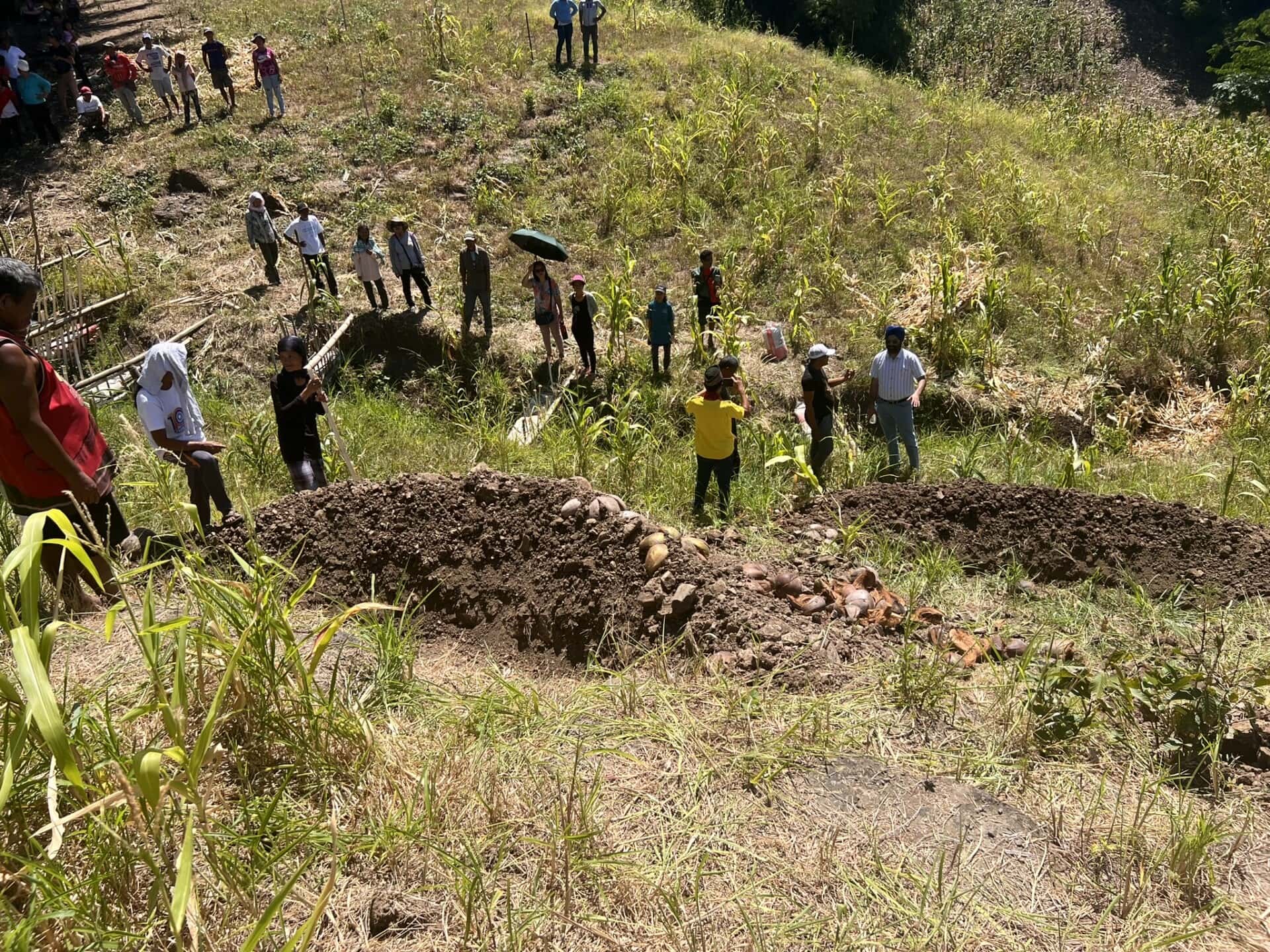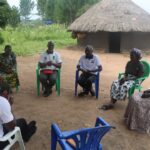Growing Together: Sustainable Farming in the Heart of Carmen

In this article, our Executive Director shares her reflections, insights, and firsthand experience from her recent trip to the Carmen region in the Philippines, where she witnessed the challenges and successes of our collaborative efforts with local farmers on the Going Bananas project.
By Anna Shoemakers, Executive Director.
Visiting the region of Carmen, where our collaboration with local farmers on the Going Bananas project takes place, was a deeply moving experience. Carmen is grappling with severe drought, exacerbated by El Niño and intensified by the relentless effects of climate change. The situation is further complicated by a history of deforestation for timber and a shift towards maize agriculture, leaving the land dry and depleted.
These harsh conditions highlight the urgent need for a transformation towards truly sustainable agricultural practices. Meeting the farmers, who endure a tough life yet remain willing to embrace change, was inspiring. Together, we shared a sense of pride and a renewed conviction that, while the challenges are daunting, hope is not lost. It is up to us to act on the ground and make a real difference.
‘Waiting for the rain, means preparing for the rain” – summarises the talk we had with the farmers on the island of Mindanao, in the region of Carmen. The sun is hot, and it is around 35 degrees every day. Although it sometimes looks like it might rain, there is never a drop of rain these days. As a result, both the land and the farmers are exhausted.
Carmen’s local circumstances are a true witness to the full impact of El Niño, a longer and longer period of draught, caused by global warming and climate change. Looking out over the landscape I could also see that the region of Carmen suffers from a lack of natural water sources and that it has no place to store water. Furthermore, the farmers were telling me that the region has a colonial history of deforestation driven by the timber trade, leaving the hills barren and vulnerable to erosion.
Over the years, these deforested hills have mostly been turned into maize (corn) fields. Most of this maize is exported as animal feed for the meat industry and growing it in an monocropping pattern requires fertile soil and a lot of pesticides. By planting the same crop repeatedly and using intensive farming methods, the once-rich topsoil has been worn down to just a few centimetres, far less than the ideal depth of a metre or more. This loss of topsoil makes the land much more vulnerable to drought.
Amidst these challenges, the COSFA (Carmen Organic Slope Farmers Association), a group of brave farmers work with us on Going Bananas! Our collaborative project name for a transformation to sustainable, regenerative agricultural practices.
Walking into the first agroforestry farm resulting from the project was an emotional moment, and a clear realisation that there is no need to be an expert to immediately sense that this is a sustainable and successful way of farming.
After visiting more agroforestry farms, which have enabled to train over 400 farmers, and engaging in deeper conversations with them, it became clear that this method of growing crops is a beacon of hope. I was astounded by the sheer variety of fruits, vegetables, and other natural resources that can thrive harmoniously in an agroforestry landscape: coconut, cacao, coffee, banana, oil palm, mango, avocado, cardamom, ginger, vanilla beans, papaya, cassava, aubergine, sweet potato, durian, chili, and many others.
I felt immense gratitude to the farmers who graciously allowed us to explore their fields and marvel at the biodiversity. Seeing our amazement brought smiles to their faces, and together, we shared a profound sense of pride.
Agroforestry is a sustainable agricultural practice that involves growing a variety of fruits, vegetables, and other natural resources together in a harmonious landscape. The benefits of agroforestry are evident even to the untrained eye. Birds were singing, insects welcomed to play their role, and the farmers protected from the heat of the sun. This method fosters biodiversity, ensures continuous harvests, and creates a resilient ecosystem. For farmers, agroforestry still means demanding work, but they say it is safer and more satisfying, as it offers a more stable flow of income and offers the advantage of shade and protection from direct sunlight, making the labour more bearable.
With an endless admiration for these farmers, I felt grateful for the experience we shared, and I was honoured to see them producing food, regenerating the land, and restoring livelihoods!



